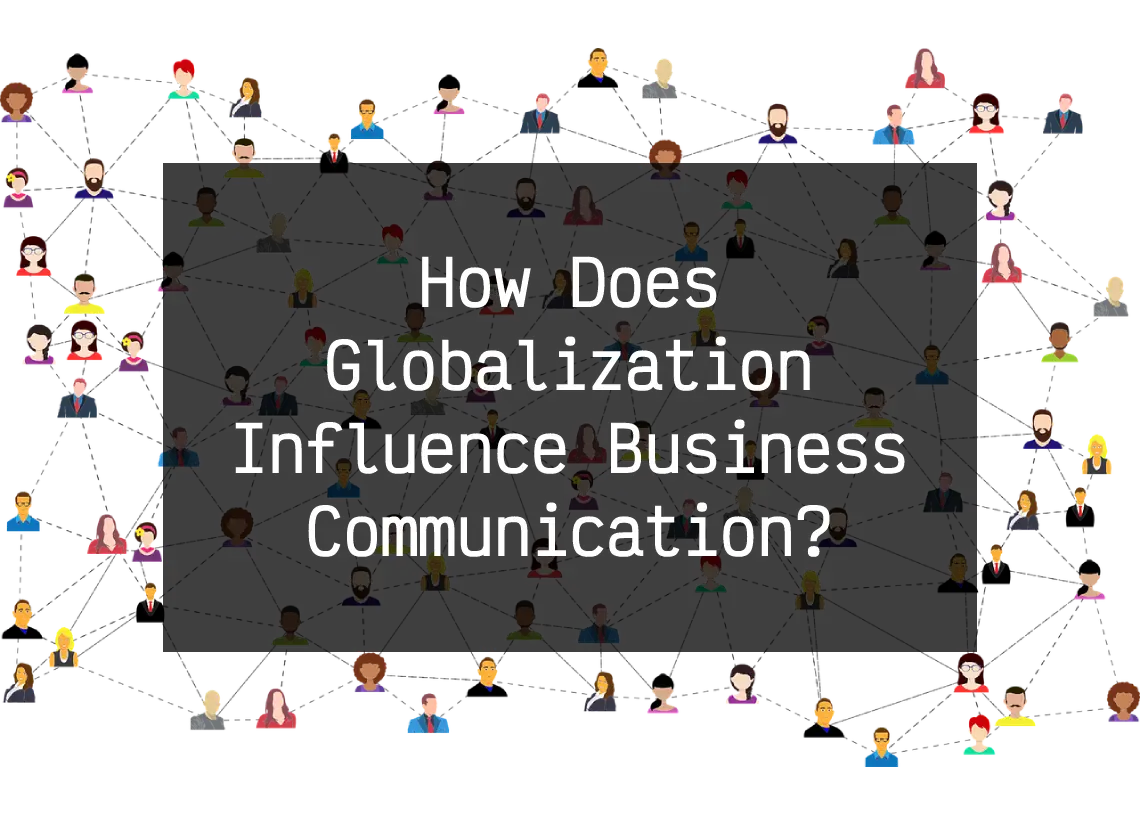Globalization is the process of integrating different countries, cultures, and economies around the world. It has had a major impact on the way business is conducted, including the way companies communicate with each other. In this blog, we will explore how globalization influences business communication, the advantages and challenges it presents, and the best practices for successful global communication.
Introduction to Globalization
Globalization is a complex phenomenon that is often difficult to define. Generally speaking, it is the process of integration and interdependence of different cultures, economies, and social systems around the world. It can be seen as the result of advances in technology, transportation, and communication that have made the world smaller and more interconnected.
The term globalization emerged in the late 20th century and has been widely used to describe the rapid changes in the global economy, culture, and politics. Globalization has had a major impact on business, as well as the way companies communicate with each other.
Impact of Globalization on Business Communication
Globalization has had a profound impact on business communication. As companies have become more globalized, they have had to adjust their communication styles in order to communicate effectively and efficiently with their customers, partners, and employees in different countries and cultures.
The most notable impact of globalization on business communication is the emergence of new technologies and tools that enable companies to communicate with each other and their customers in real time. These include Voice over IP (VoIP), video conferencing, instant messaging, and social media.
The development of these technologies has enabled companies to communicate more quickly and effectively with their customers, partners, and employees, regardless of geographic location. Additionally, these tools allow for more personalized communication, as well as the ability to collaborate with multiple parties simultaneously.
An Entire MBA in 1 Course: Award-Winning Business School Prof
Advantages of Globalization for Business Communication
The widespread adoption of technology in business communication has had a number of positive effects for companies. First and foremost, it has made it possible for businesses to communicate more quickly and effectively with their customers, partners, and employees, regardless of geographic location.
Additionally, these technologies have enabled companies to reduce operational costs associated with communication, as they no longer need to rely on traditional methods such as telephone, fax, or snail mail.
Finally, these technologies have enabled companies to build relationships with their customers and partners, regardless of distance. This has enabled companies to expand their customer base and reach new markets.
Challenges of Globalization for Business Communication
Despite the numerous advantages of globalization on business communication, there are still a number of challenges that companies must face when communicating with customers, partners, and employees in different countries and cultures.
The most common challenge is the language barrier. Although English is the most widely spoken language in the business world, there are still many countries where English is not the dominant language. As a result, companies must invest in translation services in order to effectively communicate with their customers and partners in different countries.
Additionally, cultural differences can also present a challenge for companies. Different countries and cultures have different expectations and norms when it comes to business communication, so it is important for companies to be aware of these differences in order to effectively communicate with their customers and partners.
Earn a certificate in your dream career for an affordable price at IAP Career College today!
Different Methods of Globalization
There are several different methods that companies can use to globalize their business communication. One of the most popular methods is the use of language translation services. These services can help companies effectively communicate with customers and partners in different countries, as they can provide accurate translations of documents, websites, and other materials.
Another popular method is the use of video conferencing, which can be used to communicate with customers, partners, and employees in different countries. Additionally, many companies have adopted social media as a way to communicate with their customers and partners around the world.
How to Address the Challenges of Globalization
In order to effectively address the challenges of globalization, companies must invest in language translation services and other technologies that can help them communicate with customers and partners in different countries and cultures. Additionally, companies must also be aware of cultural differences and be conscious of local expectations and norms when communicating with customers and partners in different countries.
Finally, it is important for companies to invest in training their employees on how to effectively communicate with customers and partners in different countries and cultures. This training should include topics such as cultural sensitivity, local customs, and appropriate language.
Best Practices for Global Business Communication
In order to ensure that global business communication is successful, companies should follow a few best practices. First, companies should invest in language translation services and other technologies that can help them communicate with customers and partners in different countries and cultures.
Second, companies should be aware of cultural differences and be conscious of local expectations and norms when communicating with customers and partners in different countries. Additionally, companies should invest in training their employees on how to effectively communicate with customers and partners in different countries and cultures.
Finally, companies should also strive to create a culture of openness and collaboration when communicating with customers and partners in different countries and cultures. This can help to ensure that communication is effective and that all parties involved are able to understand each other.
Examples of Global Business Communication
There are many examples of successful global business communication. One of the most notable examples is the use of video conferencing, which has enabled companies to communicate with customers, partners, and employees in different countries and cultures in real time.
Another example is the use of social media, which has enabled companies to effectively engage with their customers and partners in different countries and cultures. Additionally, many companies have invested in language translation services in order to effectively communicate with their customers and partners in different countries.
Conclusion
In conclusion, globalization has had a major impact on the way companies communicate with each other, as well as their customers and partners in different countries and cultures. There are a number of advantages and challenges associated with global business communication, and it is important for companies to be aware of these in order to ensure that their communication is successful.
By investing in language translation services and other technologies, as well as being aware of cultural differences, companies can ensure that their global business communication is successful. Additionally, companies should invest in training their employees on how to effectively communicate with customers and partners in different countries and cultures.
By following these best practices, companies can ensure that their global business communication is successful and that they are able to effectively engage with customers and partners in different countries and cultures.




